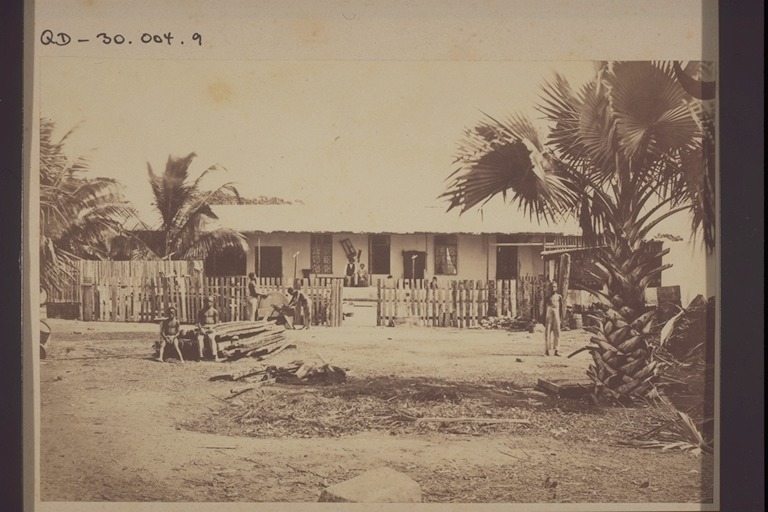Source

Source: Christian Hornberger, “Missionshaus in Keta.” Basel Mission Archives, QD-30.004.0009, https://www.bmarchives.org/items/show/69873 (accessed April 9, 2021).
Christian Hornberger (1831–1881) was born in Württemberg and trained at the Basel Evangelical Mission before entering the service of the Bremen-based North German Missionary Society, spending most of his career in British colonial West Africa (modern-day Ghana). Hornberger had been educated in the techniques of the still-new medium of photography, and in 1863 the Missionary Society sent him a camera and tasked him with photographing the mission station in Keta and its work in Africa. This photograph shows the mission house along with some of the young Africans who were educated and cared for by the missionaries. At least some of the children may have been among those purchased out of slavery by the missionaries as part of an initiative in which donors back in Germany provided funds to help emancipate a particular child in return for the right to select the child’s Christian name and to learn about his or her educational and spiritual progress (not unlike similar humanitarian and/or sponsor-a-child campaigns among the poor in the developing world in contemporary times). Techniques to foster empathy for “distant strangers” have formed part of the effort to build successful humanitarian movements ever since the late eighteenth century. Some of the photographs in Hornberger’s series feature individual Africans identified by name and were offered for sale by the Missionary Society as part of its fundraising efforts.

Source: Christian Hornberger, “Missionshaus in Keta.” Basel Mission Archives, QD-30.004.0009, https://www.bmarchives.org/items/show/69873 (accessed April 9, 2021).
Basel Mission Archives